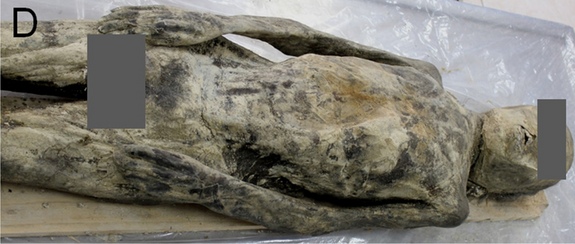by HAEIN JUNG
Scientists have performed an autopsy of a Korean man and found that he suffered from a condition known as Bochdalek-type congenital diaphragmatic hernia. Why is this news? Because that diagnosis was just made to a 300-year-old mummy dating back to the 17th century Joseon Dynasty, Live Science has reported.
The mummy figure, unearthed last year, was luckily well preserved, so medical experts were able to use the latest radiological imaging technologies and CT scans to diagnose the man with the hernia condition, also known as CDH, which usually occurs at birth and can threaten the life of an infant, according to the scientific journal Plos One.
CT scans showed several of the man’s organs, including his liver, stomach and colon, were herniated, and confirmed a hole in his diaphragm, a typical defect of the condition.
Yi-Suk Kim of Ewha Womans University, who led the research, reportedly also looked for other severe complications of CDH that could have possibly led to the man’s death, but surprisingly, no evidence was found, the Live Science article said. However, the man—believed to be 45 at the time of his death and standing about 5-foot-3—likely suffered chest and abdomen pain, and possible shortness of breath, said researchers, according to Live Science.
According to Plos One, this marked the first reported time where a “CT-assisted diagnosis” was made of a “pre-modern historical case of CDH.”
The mummy’s careful preservation—he was buried in a royal tomb—granted researchers and archaeologists the opportunity to examine the remains on such a detailed level. Archaeologists also concluded the man was married based on his topknot hairstyle.
___
All images via livescience.com.








